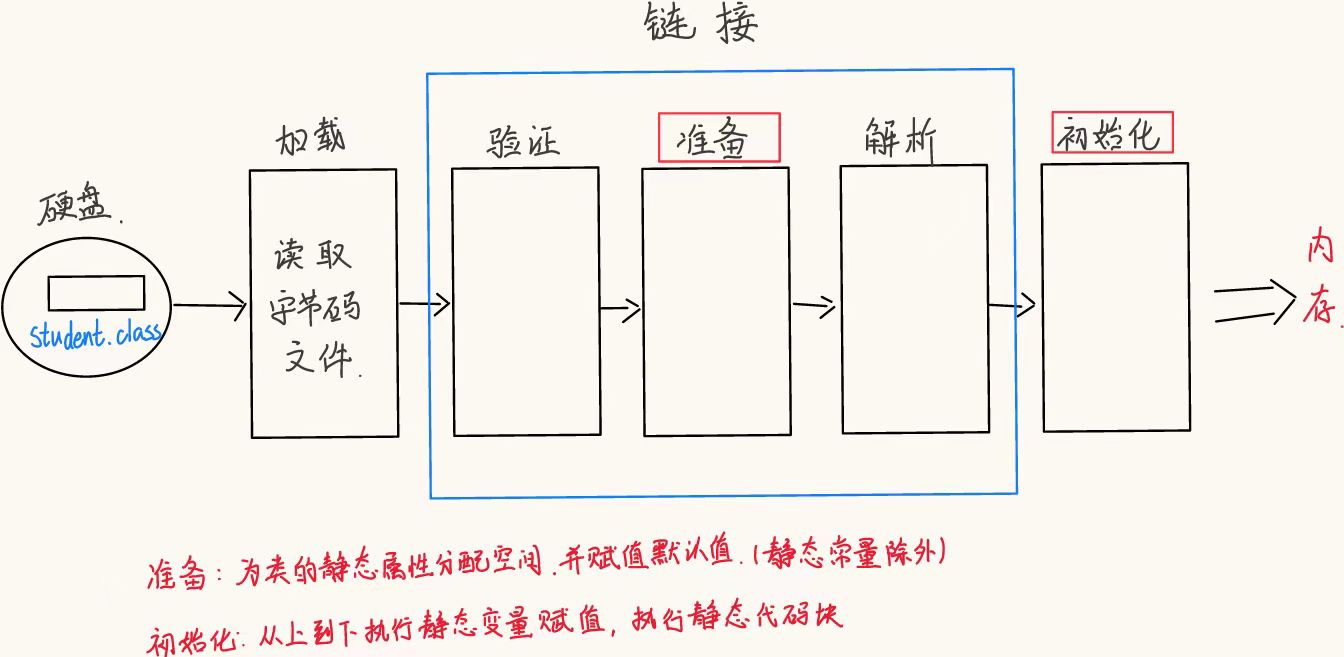从零学Java - 面向对象 Static
发布时间:2024年01月05日
面向对象 Static
文章目录
1.什么是静态?
概念: 共享的, 共有的;
基本用法:
- 静态(static)可以修饰属性,称为静态属性(类属性)。
- 静态(static)可以修饰方法,称为静态方法(类方法)。
特点:
- 静态成员是类所有对象共享的成员,在全类中只有一份,不因创建多个对象而产生多份。
- 静态成员访问不必创建对象,可直接通过类名访问。
使用场景:
- 一般工具类中属性和方法都是静态的。比如:Arrays、Math
- 如果这个属性或方法只需要一份,使用静态修饰。比如:main方法
2.Static的作用
2.1 属性
2.1.1 实例属性
实例属性是每个对象各自持有的独立空间(多份),对象单方面修改,不会影响其他对象。
eg:
public class Test {
public static void main(String[] args) {
Student stu_1 = new Student();
stu_1.name = "小明";
Student stu_2 = new Student();
stu_2.name = "小红";
}
}
public class Student {
String name;
}
2.1.2 静态属性
静态属性是整个类共同持有的共享空间(一份),任何对象修改,都会影响其他对象。
eg:
public class Test {
public static void main(String[] args) {
System.out.println("使用类名访问静态属性");
Student.count = 2000;
System.out.println("学生数量为:"+Student.count);
}
}
public class Student {
static int count;
}
eg:
练习:统计一个类的对象被创建过多少次?
//Student
public class Student {
String name;
int age;
String gender;
double score;
//默认为0, 创建对象的次数
public static int count;
public Student() {
Student.count++;
}
public Student(String name, int age, String gender, double score) {
Student.count++;
this.name = name;
this.age = age;
this.gender = gender;
this.score = score;
}
}
//Test
public class Test {
public static void main(String[] args) {
Student stu_1 = new Student();
stu_1.name = "小明";
stu_1.age = 18;
stu_1.gender = "男";
stu_1.score = 100;
Student stu_2 = new Student();
stu_2.name = "小红";
stu_2.age = 18;
stu_2.gender = "女";
stu_2.score = 100;
Student stu_3 = new Student("小绿", 20, "男", 98);
System.out.println("使用类名访问静态属性");
System.out.println("学生数量为:"+Student.count);
}
}
2.2 方法
2.2.1 静态方法
被 static 修饰的方法, 称为静态方法;
public class Student {
//默认为0, 创建对象的次数
public static int count;
public static void calcCount() {
System.out.println("开始统计...");
Student.count = 2000;
System.out.println("统计结束...");
//可在本类中,通过“静态方法名”访问
method(); // Student.method();
}
public static void method() {
// 方法体
}
}
public class Test {
public static void main(String[] args) {
System.out.println("使用类名访问静态方法");
//可在其他类中,通过“类名.静态方法名”访问
Student.calcCount();
System.out.println("学生数量为:"+Student.count);
}
}
- 可在本类中, 通过 “静态方法名” 访问;
- 可在其他类中, 通过 “类名.静态方法名” 访问;
特点:
- 静态方法允许直接访问静态属性和静态方法。
- 静态方法不能直接访问实例属性和实例方法,需要创建对象访问。
- 非静态方法中可以直接访问静态属性和静态方法。
- 静态方法中不允许使用this或是super关键字。
- 静态方法可以被继承,可以重载,不能被重写(重写只存在于实例方法之间)。
2.3 代码块
2.3.1 局部代码块
局部代码块:定义在方法内部的代码块。
eg:
public class TestBlock {
public static void main(String[] args) {
int num1 = 100;
{
int num2 = 200;
System.out.println(num1);
System.out.println(num2);
}
}
}
作用: 会缩小变量的使用范围,提前释放局部变量,节省内存。
2.3.2 动态代码块
动态代码块:定义在方法外,类内部的代码块。
执行时机:创建对象时,触发动态代码块的执行。作用:可为实例属性初始化。
代码编译后会将动态代码块中的内容添加到每个构造方法的首行;
eg:
//Student
public class Student {
String name;
public Student() {
//System.out.println("动态代码块执行了");
}
public Student(String name) {
//System.out.println("动态代码块执行了");
this.name = name;
}
//动态代码块
{
System.out.println("动态代码块执行了");
}
}
2.3.3 静态代码块
静态代码块:使用static修饰的动态代码块。
执行时机:类加载时,触发静态代码块的执行(仅一次)。
作用:可为静态属性初始化。
eg:
//Student
public class Student {
String name;
public Student() {
}
public Student(String name) {
this.name = name;
}
//静态代码块
static {
System.out.println("静态代码块执行了");
}
}
2.4 静态导入
eg:
package StageOne.day12.demo04;
import static java.lang.System.out;
/**
* @author 胡昊龙
* @version 1.0
* @description: TODO
* @date 2024/1/4 16:33
*/
public class TestImportStatic {
public static void main(String[] args) {
out.println("静态导入");
}
}
3.类加载
3.1 什么是类加载?
JVM首次使用某个类时,需通过CLASSPATH查找该类的.class文件。
将.class文件中对类的描述信息加载到内存中,进行保存。如:包名、类名、父类、属性、方法、构造方法…
3.2 触发类加载的5种情况
-
创建对象。
Student s=new Student(); -
创建子类对象。
class CollegeStudent extends Student {...} CollegeStudent stu = new CollegeStudent(); -
访问静态属性。
static int count; //静态属性 System.out.println(Student.count); -
调用静态方法。
public static void method() {...} // 静态方法 Student.method(); -
主动加载:Class.forName(“全限定名”);//后面讲
3.3 类加载过程的5个阶段
类加载的五个阶段:
- 加载—>链接 (验证—>准备—>解析)—>初始—>使用—>卸载
准备:为类的静态属性分配空间,并赋值默认值(静态常量除外)
初始化:从上到下执行静态变量赋值,静态代码块

4.面试题
eg:
阅读下方代码, 请说明运行结果和具体的执行过程
public class TestStatic {
public static void main(String[] args) {
Demo.show();
}
}
class Demo {
static {
Demo.count1++;
Demo.count2++;
}
private static Demo demo = new Demo();
public static int count1;
public static int count2=0;
public Demo() {
Demo.count1++;
Demo.count2++;
}
public static void show() {
System.out.println("count1:"+count1);
System.out.println("count2:"+count2);
}
}
res:
count1:2
count2:0
文章来源:https://blog.csdn.net/weixin_50858647/article/details/135392541
本文来自互联网用户投稿,该文观点仅代表作者本人,不代表本站立场。本站仅提供信息存储空间服务,不拥有所有权,不承担相关法律责任。 如若内容造成侵权/违法违规/事实不符,请联系我的编程经验分享网邮箱:chenni525@qq.com进行投诉反馈,一经查实,立即删除!
本文来自互联网用户投稿,该文观点仅代表作者本人,不代表本站立场。本站仅提供信息存储空间服务,不拥有所有权,不承担相关法律责任。 如若内容造成侵权/违法违规/事实不符,请联系我的编程经验分享网邮箱:chenni525@qq.com进行投诉反馈,一经查实,立即删除!
最新文章
- Python教程
- 深入理解 MySQL 中的 HAVING 关键字和聚合函数
- Qt之QChar编码(1)
- MyBatis入门基础篇
- 用Python脚本实现FFmpeg批量转换
- 爱这个世界,从爱自己开始
- backtrader结合大语言模型chatGPT
- 使用 std::forward 的作用---完美转发
- window修改IP
- 鸿蒙 Window 环境的搭建
- python爬虫进阶篇:用Scrapy框架进行百度搜索并爬取搜索结果进行持久化
- git:使用git rebase合并多次commit为一个
- C++内存空间详细解读
- 基于SSM的KTV包厢管理系统(有报告)。Javaee项目,ssm项目。
- 一个初级测试工程师的经历--我在阿里的两年